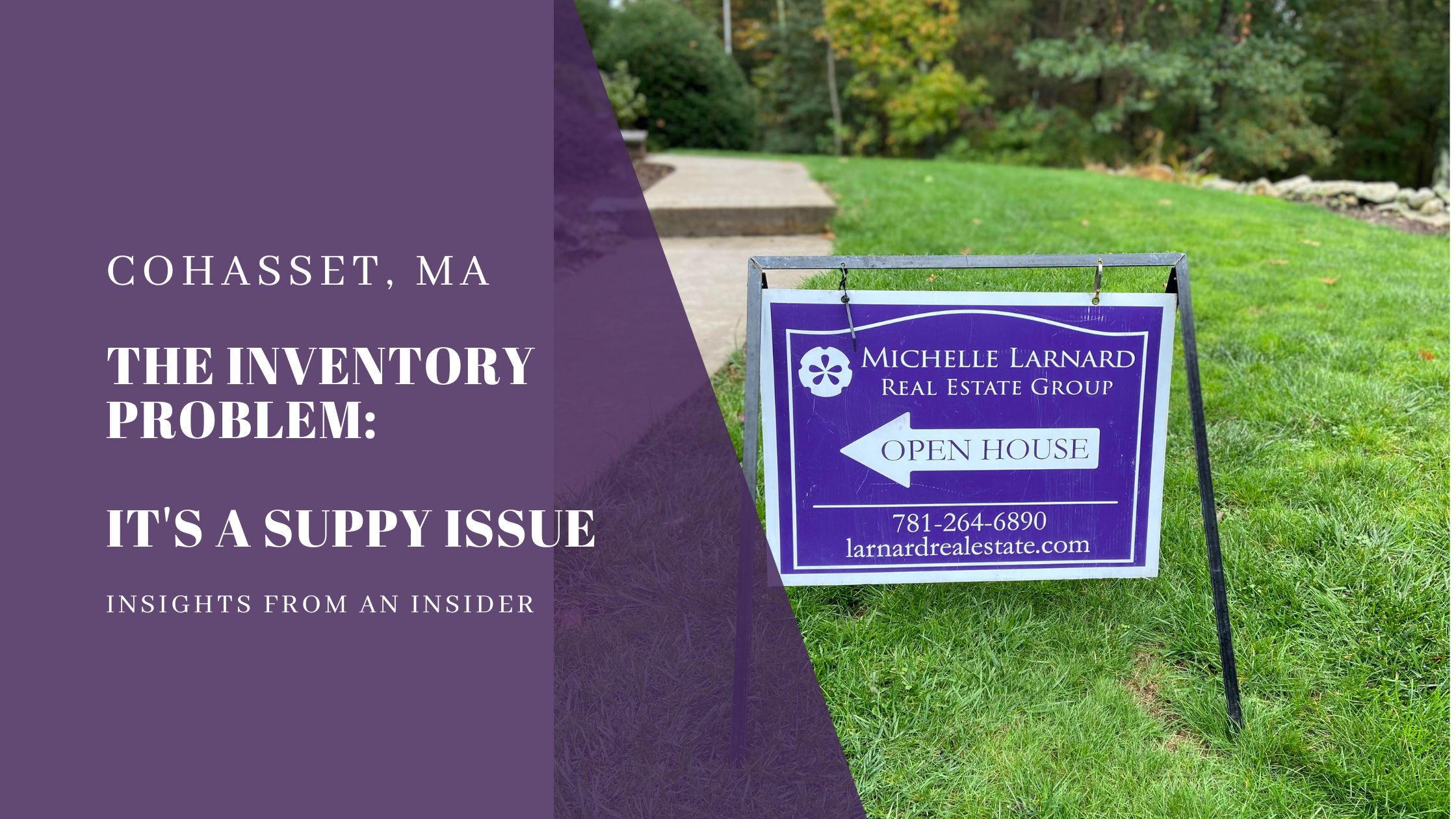“Bill, I’d move, but there is nothing for sale that fits my needs.” I hear a phrase similar to this on a consistent basis. And I am not the only real estate professional hearing this, or something very similar to this, on a regular basis. The lack of inventory is creating a real issue. We call it the inventory problem. This is regardless if you are a move-up home buyer or a downsizer. Let’s look at the inventory problem. And then I will show you why the inventory problem is a supply issue.
The Inventory Problem
We call it the inventory problem. The lack of inventory is a phrase used to describe the lack of available homes for sale. This is akin to going into a store that has nothing on the shelves because it is all sold out. Naturally one would think that the store owner would replenish the stock of available goods. But, in real estate, we just can’t call a vendor and get more available goods. Sure home builders could build more homes, but that doesn’t happen overnight. And in the Northeast, available land for development is scarce.
Let’s look at three scenarios that are causing the inventory problem. The main issue is that it is a supply issue.
The move-up buyer.
For the move-up buyer, the downsizer is not moving. In a way, there should be an ebb and flow between these two pools of home buyers. But the market has seized up, with demand on either pool higher than supply. Many downsizers would sell if there was an acceptable home to relocate into such as a more modest home being sold by the move-up buyer. It is a chicken or egg scenario. But the downsizer is being outbid by the demand for that sort of home and is opting to stay put.
It’s a Supply Issue
It is a supply issue. Even with the higher interest rates from the Federal Reserve’s tightening of their fiscal policy, demand for real estate has stayed strong. While it may not be as strong as it was last spring, demand is still there in the market demand is still strong for the entry-level buyer, the move-up buyer, and the lower end of the luxury market. (The higher end of the luxury market tends to be less interest rate sensitive.) What I have seen since the Federal Reserve (a.k.a. The Fed) began its tightening of monetary policy is that there remain good qualified buyers in the marketplace. Some have adjusted their price points, but they have remained in the market even with the higher interest rates.
So, when a new listing comes on the market, there are still more buyers than properties at most price points. This is a supply problem. Supply is simply behind demand.
Mortgage Rates and Inventory
As I have said, it is a supply problem. Part of the seizing up between the move-up buyer, and the downsizer is mortgage interest rates. Let’s look at two scenarios.
The move-up buyer has an interest rate issue. Use this example.
- Three years ago a buyer purchases a 3-bedroom home for $600,000 in the pre-covid market.
- Using conventional financing this buyer put down 20% of the purchase price, or $120,000.
- This same buyer finances $480,000
- Fast forward to today, that home is worth, say, $850,000 to $900,000 in today’s inventory-starved market.
- This same buyer wants to move up to a 4-bedroom home available in today’s market for $1,050,000
- At $850,000 as the sale price of the 3-bedroom home and $1,050,000 for the new 4-bedroom home, this buyer has equity of $370,000 to put down.
- This buyer’s new 4-bedroom home would have a mortgage of $680,000
Sounds simple enough in a stable interest rate environment. But what we have seen is that this move-up buyer could normally afford the extra $200,000 mortgage balance for the move-up. But what is causing the seize-up in the market is that this buyer now needs to refinance what is most likely a high two percent, low three percent, mortgage into a mid-five percent mortgage. This additional cost in mortgage payments, along with the increased mortgage balance is making the move-up buyer stay put. This lack of movement is adding to the supply problem.
The downsizer.
The downsizer has the same problem. This look at this example.
- Twenty years ago the downsizer bought a 4-bedroom home for $450,000.
- With a 20% downpayment of $90,000, and a mortgage principal balance of $560,000
- Fast forward to today, given a refi or two along the way, the principal has most likely been paid down to $275,000
- So this downsizer sells his home 4-bedroom home for $1,050,000 and nets $775,000
The problem is that in order to keep the same mortgage balance of $275,000, the current interest rate environment leaves a much higher monthly payment for the downsizer, one that is almost double the payment for the current 4-bedroom home. The economic incentive to move is lost in this market segment. Hence its contribution to the supply issue.
So what is one to do in this market? The solution can be within the lending world. Perhaps the downsizer looks at the benefits of using a reverse mortgage for the purchase of their downsized home. Or the buyer uses an adjustable-rate mortgage to get their interest rate down. Many of the pundits on Wall Street expect The Fed to cut interest rates late this year. While I am neither a mortgage professional nor a Wall Street analyst, I do have access to people who can help in these departments. A lower interest rate environment will get the supply issue balanced out.
Other blogs of interest
